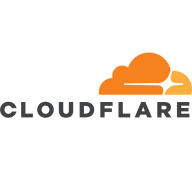


Symantec Data Loss Prevention and Microsoft Purview Data Loss Prevention are leading competitors in the Data Loss Prevention category. While Symantec provides superior data classification and machine learning capabilities, Microsoft Purview gains an edge with its seamless integration with Office 365 and Azure for compliance-driven organizations.
Features: Symantec Data Loss Prevention provides advanced machine learning for data classification, robust network DLP capabilities, and a unique document fingerprinting technology. Additionally, it supports multiple encryption mechanisms and offers strong endpoint protection. Microsoft Purview Data Loss Prevention excels in its integration with Office 365 and Azure, automatic labeling, and multi-platform support to enhance data monitoring. Purview also focuses on compliance with a user-friendly interface to educate on data handling.
Room for Improvement: Symantec's installation complexity and Oracle database reliance lead to higher operational costs. Users also report frequent false positives and suggest better integration with other technologies. Microsoft Purview needs improved system integration, particularly with non-Microsoft databases, and enhancements in endpoint DLP capabilities. Its incident handling and alert mechanisms also need refinement to better assist users.
Ease of Deployment and Customer Service: Symantec Data Loss Prevention mainly operates on-premises. Post-Broadcom acquisition, support has suffered, with reports of delayed responses and assistance challenges. Microsoft Purview, leveraging its public and hybrid cloud capabilities, benefits from strong customer support, though its user interface may be perceived as less intuitive. The extensive integration with the broader Microsoft ecosystem provides additional support advantages.
Pricing and ROI: Symantec's pricing, although competitive, is elevated by the necessity of Oracle database licenses and specific hardware, potentially deterring smaller firms. Despite this, its strong ROI stems from reduced operational costs and comprehensive security. Microsoft Purview offers competitive pricing through its E5 license bundle, integrated into the broader Microsoft suite. Some premium features involve extra costs, but customers generally find the cost justified by the integration and added value.
WordPress security can be tricky, and that's where Cloudflare can be absolutely helpful for small businesses.
For the small project I was working on, using the basic tier provided a huge improvement at zero cost.
In terms of return on investment with Cloudflare, it costs my time to set them up, but basically once they're set up, it's done.
This would help us address issues promptly, especially during unforeseen events like DDoS attacks.
Cloudflare does not offer hands-on technical support to fix customer problems but rather a self-service model.
The key factor is the language in which the support is offered, which, in this case, is in Thai.
Once we got to the Microsoft engineers, the experience was great.
The support provided from both Symantec Turkey and distributor companies enables us to support customers and partners effectively.
The support team changed from MTechPro to a different partner, affecting our experience.
It is a SaaS tool, but the fact that they have workloads deployed across the world proves that it is a highly scalable tool.
The tool offers very good performance, even during high-traffic periods.
I rate the solution’s scalability an eight out of ten.
The policy working and detection technology need enhancements.
When using native proxy solutions, scalability issues are minimized, and the solution remains stable.
For DDoS protection, I would not recommend Cloudflare.
I rate the solution’s stability an eight out of ten.
The service is very stable with no impacts during high-traffic periods.
Sometimes the solution is not stable when the internal connection is not reliable, so this aspect needs improvement.
There's a need for improvement in areas like AI-based DDoS attacks and Layer 7 WAF features.
Despite these challenges, overall, Cloudflare remains the preferred solution compared to Azure, AWS CloudFront, and Google Cloud Armor.
The timing aspect can lead to it being considered overpriced. This is a particular concern we have with Cloudflare, as they may struggle with accurately detecting the client.
Implementing a degree of severity ranking is essential.
Endpoint Data Loss Prevention needs to be improved as it is not up to expectations.
Symantec responded by creating an OCR module, enabling the capability to search within images.
A main disadvantage of Symantec DLP is its reliance on Oracle.
That's where Cloudflare shines for smaller businesses – it's ten times cheaper than Akamai.
I find it to be cheap.
I think they should consider reevaluating the pricing for support, as it can be quite high.
Symantec Data Loss Prevention is more expensive compared to competing solutions.
The most valuable features of the solution are performance and security.
Techniques like minification and image compression reduce the size of assets, leading to better performance and faster user load times.
The solution has been able to compare it to the market, and I think the product has taken great strides in automating quite a bit of things, and they use a lot of AI.
Microsoft Purview Data Loss Prevention usually performs well, except for endpoint Data Loss Prevention, which may need improvements.
The feature I find most valuable that I'm currently using is the quickness of the emails that the Microsoft Purview Data Loss Prevention solution sends to us, where we get notifications that say a user has potentially breached our data guideline rules, and we get those alerts continuously, allowing us to enforce them manually.
Symantec's OCR module enhances image analysis, crucial for detecting data loss via screenshots, improving the overall security posture against data breaches.
Symantec Data Loss Prevention has proprietary metadata and is well-suited for endpoint-level security.



| Company Size | Count |
|---|---|
| Small Business | 46 |
| Midsize Enterprise | 8 |
| Large Enterprise | 25 |
| Company Size | Count |
|---|---|
| Small Business | 10 |
| Midsize Enterprise | 3 |
| Large Enterprise | 12 |
| Company Size | Count |
|---|---|
| Small Business | 23 |
| Midsize Enterprise | 12 |
| Large Enterprise | 27 |
Cloudflare is a highly-regarded Content Delivery Network (CDN) and a Distributed Denial-of-Service (DDoS) protection solution. The robust global connectivity cloud platform that is Cloudflare ensures users are able to connect to the Internet quickly, securely, and reliably. Cloudflare is one of the world's largest networks in the marketplace today. Using Cloudflare, businesses, educational entities, NGOs, vloggers, bloggers, and anyone else with an internet presence can experience more secure, faster websites and applications.
Currently, there are millions of Internet locations on Cloudflare, and the Cloudflare network
continues to grow every day by the thousands. The solution is able to fulfill the requests for
millions of websites seamlessly and serves on average 45 million HTTP requests per second.
Cloudflare has safe, secure data centers in close to 300 cities worldwide to ensure every
client request is filled as quickly as possible. It is Cloudflare’s edge network that makes this
possible by keeping content and other services as close to each client as possible, so the
information requests are always only seconds away.
Many organizations that work in democracy, civil society, human rights, or the arts are able to
access Cloudflare's highest levels of protection for free via Project Galileo. Additionally, official
election websites can be secured from hacking and fraud through Cloudflare’s Project
Athenian, also at no additional cost.
Cloudflare can also help organizations of all sizes develop a robust zero-trust strategy to
ensure the highest levels of productivity and profitability. Employees, stakeholders, and end users have a greater level of satisfaction and overall improved user experience, which can, in
turn, result in higher revenues and overall ROI. Zero-trust and BYOD (bring your own device)
access ensure end users and employees always have the best resources and technology
available to them at all times.
Cloudflare benefits
Cloudflare has many benefits. Some of its most valuable benefits include:
- Faster load times
- Robust DNS security
- Intuitive cloud Web Application Firewall (WAF)
- Free universal SSL
- Image enhancement
- Automatic browser caching
- Next-generation cloud load balancer
- Accelerated Mobile Pages (AMP)
- Rate limiting
- Minification
- Zero-trust capabilities
- Cost-effective
- Reduced carbon footprint
Reviews from real users
“Many websites require an SSL certificate because they sell stuff and want SSL. Cloudflare
comes with an SSL certificate built in. It's automatic. You sign yourself up for Cloudflare, and
an SSL certificate automatically protects your website. If you have a connection between your
website and your host, the server, Cloudflare, and the host, you don't necessarily need a
certificate.” Spencer M., Owner at Tech Exchange
“What I like best about Cloudflare is that my company can use it to trace and manage
applications and monitor traffic. The solution tells you if there's a spike in traffic. Cloudflare
also sends you a link to check your equipment and deployment and track it through peering,
so it's a valuable tool.” Daniel P., Network Engineer at Ufinet
“The most valuable feature of Cloudflare is the GUI. You are able to control the solution very
well through the interface. There is a lot of functionality that is embedded in the service.” PeerSpot user, Competence Center Manager at a tech services company
At Microsoft, our mission is to empower every person and every organization on the planet to achieve more. Our mission is grounded in both the world in which we live and the future we strive to create. Today, we live in a mobile-first, cloud-first world, and the transformation we are driving across our businesses is designed to enable Microsoft and our customers to thrive in this world.
Keeping sensitive corporate information safe and compliant has never been easy. But today, you’re faced with a totally new set of data protection challenges. Sensitive information is leaving the safety of your corporate network as more employees share files over consumer cloud storage services and access those files on their own mobile devices. The number of targeted cyber attacks continues to grow, as cybercriminals develop effective new methods for defeating traditional security measures and stealing corporate information. And as all of these factors converge, it becomes increasingly difficult to manage corporate information and protect it against loss and theft.
Symantec Data Loss Prevention (DLP) provides a comprehensive approach to information protection that embraces today’s cloud- and mobile-centered realities. With DLP, you can:
• Discover where data is stored across all of your cloud, mobile, network, endpoint, and storage systems
• Monitor how data is being used, whether your employees are on or off the network
• Protect data from being leaked or stolen—no matter where it’s stored or how it’s used
We monitor all Data Loss Prevention (DLP) reviews to prevent fraudulent reviews and keep review quality high. We do not post reviews by company employees or direct competitors. We validate each review for authenticity via cross-reference with LinkedIn, and personal follow-up with the reviewer when necessary.